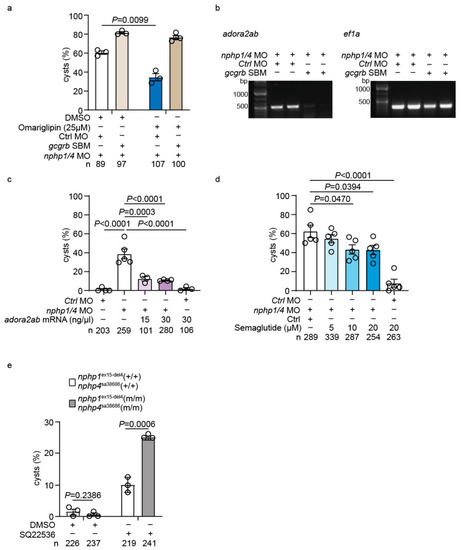
The adora2ab pharmacological modulation of GLP-1 signaling affects cyst formation in a zebrafish nephronophthisis model. (a) Combined treatment with gcgrb SBM and Omarigliptin demonstrates that Omarigliptin’s therapeutic effect is abolished in gcgrb-depleted nphp1/nphp4 morphant embryos, indicating that Omarigliptin’s cyst-reducing activity requires intact gcgrb signaling. (b) RT-PCR analysis shows reduced adora2ab expression in nphp1/nphp4 morphants co-injected with gcgrb SBM, indicating that adora2ab acts downstream of gcgrb signaling. ef1a serves as the loading control. (c) Rescue of cyst formation in nphp1/nphp4 morphant embryos by adora2ab mRNA injection. (d) Dose-dependent reduction in cyst formation in nphp1/nphp4 morphant embryos treated with increasing concentrations of Semaglutide, a GLP-1 agonist. (e) Quantification of glomerular cyst formation in wild-type siblings (+/+) and homozygous mutants (m/m) treated with the adenylate cyclase inhibitor SQ22536 (100 µM). Wild-type siblings exhibit mild cystogenesis, while homozygous mutants show significantly increased susceptibility, indicating that adenylate cyclase activity is critical for maintaining pronephric integrity in the absence of functional nphp1/nphp4. Data are presented as mean ± SEM. Each circle represents an independent experiment. The total number of embryos analyzed per condition (n) is indicated below each graph.
|